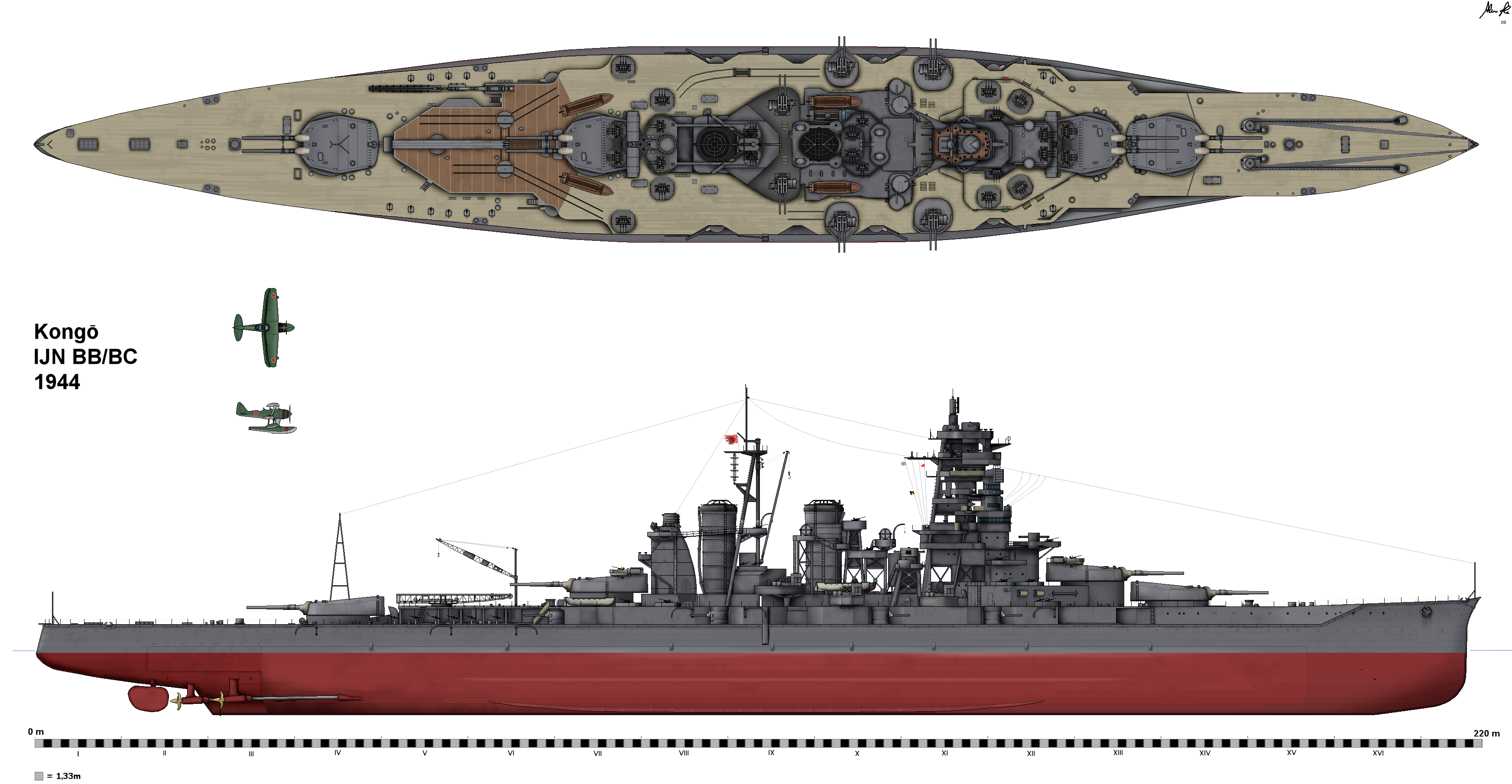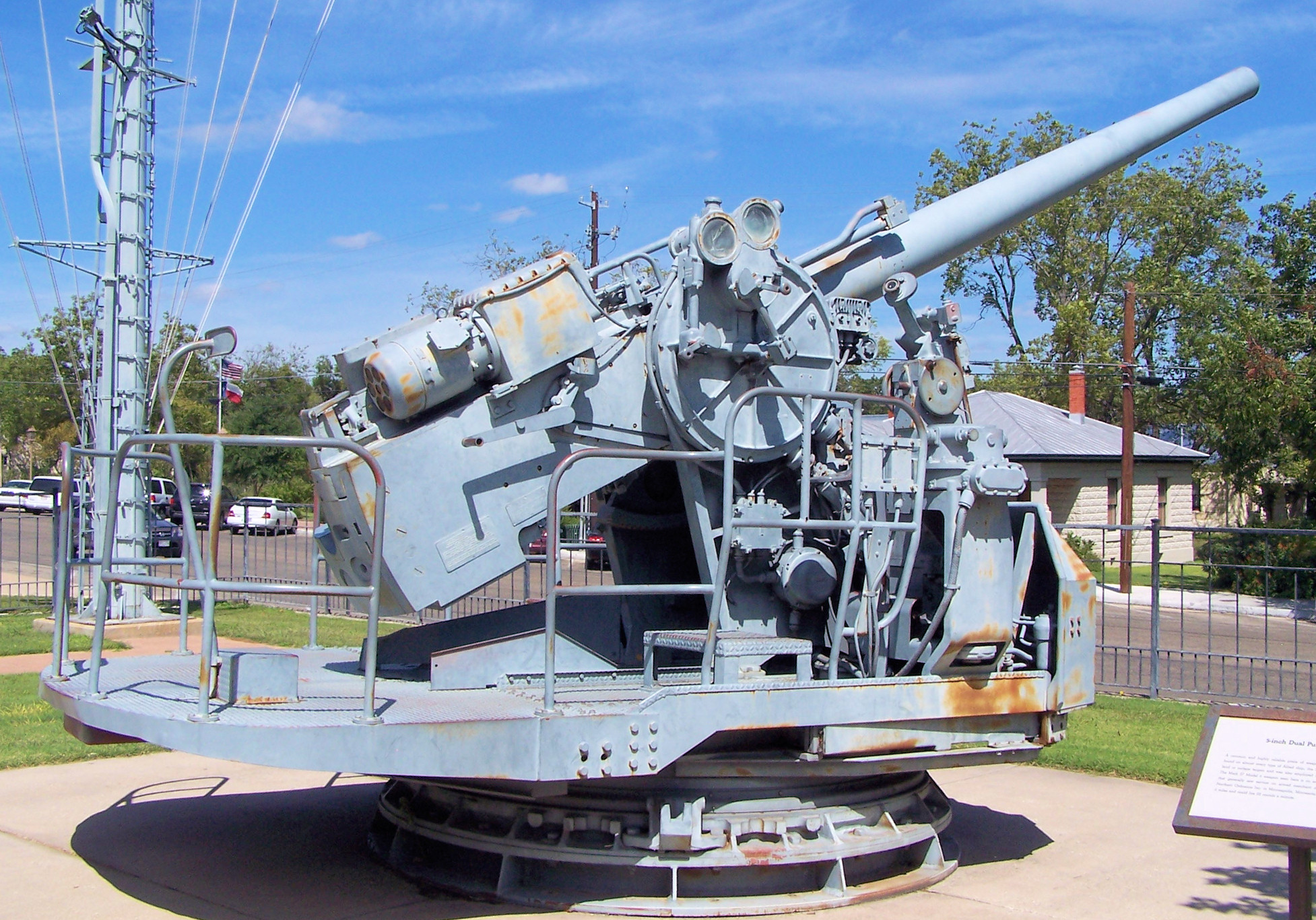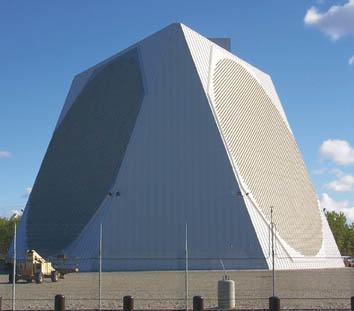|
Kongō-class Battlecruiser
The was a class of four battlecruisers built for the Imperial Japanese Navy (IJN) immediately before World War I. Designed by British naval architect George Thurston, the lead ship of the class, , was the last Japanese capital ship constructed outside Japan, by Vickers at Barrow-in-Furness. Her sister ships, , and , were all completed in Japan. During the late 1920s, all but ''Hiei'' were reconstructed and reclassified as battleships. After the signing of the London Naval Treaty in 1930, ''Hiei'' was reconfigured as a training ship to avoid being scrapped. Following Japan's withdrawal from the treaty, all four underwent a massive second reconstruction in the late 1930s. Following the completion of these modifications, which increased top speeds to over , all four were reclassified as fast battleships. The ''Kongō''-class battleships were the most active capital ships of the Japanese Navy during World War II, participating in most major engagements of the war. ''Hiei'' and '' ... [...More Info...] [...Related Items...] OR: [Wikipedia] [Google] [Baidu] |
Yokosuka
is a city in Kanagawa Prefecture, Japan. , the city has a population of 409,478, and a population density of . The total area is . Yokosuka is the 11th most populous city in the Greater Tokyo Area, and the 12th in the Kantō region. The city is host to United States Fleet Activities Yokosuka. Geography Yokosuka occupies most of Miura Peninsula, and is bordered by the mouth of Tokyo Bay to the east and Sagami Bay on the Pacific Ocean on the west. Surrounding municipalities * Kanazawa-ku, Yokohama * Miura * Hayama * Zushi History Pre-modern period Archaeologists have found stone tools and shell middens from the Japanese Paleolithic period and ceramic shards from the Jōmon and Kofun periods at numerous locations in the area. During the Heian period, local warlord Muraoka Tamemichi established Kinugasa Castle in 1063. He became the ancestor of the Miura clan, which subsequently dominated eastern Sagami Province for the next several hundred years. The Miura clan supported ... [...More Info...] [...Related Items...] OR: [Wikipedia] [Google] [Baidu] |
Belt Armor
Belt armor is a layer of heavy metal armor plated onto or within the outer hulls of warships, typically on battleships, battlecruisers and cruisers, and aircraft carriers. The belt armor is designed to prevent projectiles from penetrating to the heart of a warship. When struck by an artillery shell or underwater torpedo, the belt armor either absorbs the impact and explosion with its sheer thickness and strength, or else uses sloping to redirect the projectile and its blast downwards. Typically, the main armor belt covers the warship from its main deck down to some distance below the waterline. If, instead of forming the outer hull, the armor belt is built inside the hull, it is installed at a sloped angle for improved protection, as described above. The torpedo bulkhead Frequently, the main belt's armor plates were supplemented with a torpedo bulkhead spaced several meters behind the main belt, designed to maintain the ship's watertight integrity even if the main belt ... [...More Info...] [...Related Items...] OR: [Wikipedia] [Google] [Baidu] |
Floatplane
A floatplane is a type of seaplane with one or more slender floats mounted under the fuselage to provide buoyancy. By contrast, a flying boat uses its fuselage for buoyancy. Either type of seaplane may also have landing gear suitable for land, making the vehicle an amphibious aircraft. British usage is to call "floatplanes" "seaplanes" rather than use the term "seaplane" to refer to both floatplanes and flying boats. Use Since World War II and the advent of helicopters, advanced aircraft carriers and land-based aircraft, military seaplanes have stopped being used. This, coupled with the increased availability of civilian airstrips, have greatly reduced the number of flying boats being built. However, numerous modern civilian aircraft have floatplane variants, most of these are offered as third-party modifications under a supplemental type certificate (STC), although there are several aircraft manufacturers that build floatplanes from scratch. These floatplanes have found ... [...More Info...] [...Related Items...] OR: [Wikipedia] [Google] [Baidu] |
Depth Charge
A depth charge is an anti-submarine warfare (ASW) weapon. It is intended to destroy a submarine by being dropped into the water nearby and detonating, subjecting the target to a powerful and destructive Shock factor, hydraulic shock. Most depth charges use explosive, high explosive charges and a fuze set to detonate the charge, typically at a specific depth. Depth charges can be dropped by ships, patrol aircraft, and helicopters. Depth charges were developed during World War I, and were one of the first viable methods of attacking a submarine underwater. They were widely used in World War I and World War II, and remained part of the anti-submarine arsenals of many navies during the Cold War, during which they were supplemented, and later largely replaced, by anti-submarine homing torpedoes. A depth charge fitted with a nuclear warhead is also known as a "nuclear depth bomb". These were designed to be dropped from a patrol plane or deployed by an anti-submarine missile from a s ... [...More Info...] [...Related Items...] OR: [Wikipedia] [Google] [Baidu] |
Dual-purpose Gun
A dual-purpose gun is a naval artillery mounting designed to engage both surface and air targets. Description Second World War-era capital ships had four classes of artillery: the heavy main battery, intended to engage opposing battleships and cruisers of 305 mm to 457 mm (12 inch to 18 inch); a secondary battery for use against enemy destroyers of 152 mm to 203 mm (6 inch to 8 inch); heavy anti-aircraft guns of 76 mm to 127 mm (3 inch to 5 inch), which could create barrages to knock out airplanes at a distance; finally, light rapid-fire anti-aircraft batteries (A/A) to track and bring down aircraft at close range. The light A/A was dispersed throughout the ship and included both automatic cannons of 20 mm to 40 mm (.787 inch to 1.57 inch) and heavy machine guns of 12.7 mm to 14.5 mm (.50 inch to .58 inch). During World War II, the US Navy, Royal Navy, the French Navy, and the Imperial Japanese Navy combined the secondary battery with the heavy anti-aircraft guns, creating a d ... [...More Info...] [...Related Items...] OR: [Wikipedia] [Google] [Baidu] |
Early Warning Radar
An early-warning radar is any radar system used primarily for the long-range detection of its targets, i.e., allowing defences to be alerted as ''early'' as possible before the intruder reaches its target, giving the air defences the maximum time in which to operate. This contrasts with systems used primarily for tracking or gun laying, which tend to offer shorter ranges but offer much higher accuracy. EW radars tend to share a number of design features that improve their performance in the role. For instance, EW radar typically operates at lower frequencies, and thus longer wavelengths, than other types. This greatly reduces their interaction with rain and snow in the air, and therefore improves their performance in the long-range role where their coverage area will often include precipitation. This also has the side-effect of lowering their optical resolution, but this is not important in this role. Likewise, EW radars often use much lower pulse repetition frequency to maximi ... [...More Info...] [...Related Items...] OR: [Wikipedia] [Google] [Baidu] |
Radar
Radar is a detection system that uses radio waves to determine the distance (''ranging''), angle, and radial velocity of objects relative to the site. It can be used to detect aircraft, ships, spacecraft, guided missiles, motor vehicles, weather formations, and terrain. A radar system consists of a transmitter producing electromagnetic waves in the radio or microwaves domain, a transmitting antenna, a receiving antenna (often the same antenna is used for transmitting and receiving) and a receiver and processor to determine properties of the objects. Radio waves (pulsed or continuous) from the transmitter reflect off the objects and return to the receiver, giving information about the objects' locations and speeds. Radar was developed secretly for military use by several countries in the period before and during World War II. A key development was the cavity magnetron in the United Kingdom, which allowed the creation of relatively small systems with sub-meter resolution. Th ... [...More Info...] [...Related Items...] OR: [Wikipedia] [Google] [Baidu] |
List Of Japanese World War II Radar
A list of Japanese radars used during World War II. Army radar Radar used by the Imperial Japanese Army. Ground-based radar *Ta-Chi 1 Ground-Based Target Tracking Radar Model 1 - SCR-268 1.5 meter band (200 MHz) derivative built in small numbers *Ta-Chi 2 Ground-Based Target Tracking Radar Model 2 - SCR-268 1.5 meter band (200 MHz) derivative built in small numbers *Ta-Chi 3 Ground-Based Target Tracking Radar Model 3 - (Based on British GL sets captured in Singapore) - 3.75 m (80 MHz) pw = 1 or 2 us, Power = 50 kW, PRF = 1 or 2 kHz (range 40 km), 150 built by Sumitomo Entered service early 1944. Yagi Antenna *Ta-Chi 4 Ground-Based Target Tracking Radar Model 4 - SCR-268 1.5 meter band (200 MHz) derivative built in small numbers *Type A Bi-static Doppler Interface Detector (High Frequency Warning Device "Ko") *Ta-Chi 6 TypeB Fixed Early Warning Device (Fixed Early Warning Device "Otsu") 1943 - 3 meter band (100 MHz) - 60 built *Ta-Chi ... [...More Info...] [...Related Items...] OR: [Wikipedia] [Google] [Baidu] |
Standard Displacement
The displacement or displacement tonnage of a ship is its weight. As the term indicates, it is measured indirectly, using Archimedes' principle, by first calculating the volume of water displaced by the ship, then converting that value into weight. Traditionally, various measurement rules have been in use, giving various measures in long tons. Today, tonnes are more commonly used. Ship displacement varies by a vessel's degree of load, from its empty weight as designed (known as "lightweight tonnage") to its maximum load. Numerous specific terms are used to describe varying levels of load and trim, detailed below. Ship displacement should not be confused with measurements of volume or capacity typically used for commercial vessels and measured by tonnage: net tonnage and gross tonnage. Calculation The process of determining a vessel's displacement begins with measuring its draft.George, 2005. p.5. This is accomplished by means of its "draft marks" (or "load lines"). A merc ... [...More Info...] [...Related Items...] OR: [Wikipedia] [Google] [Baidu] |
Fast Battleship
A fast battleship was a battleship which emphasised speed without – in concept – undue compromise of either armor or armament. Most of the early World War I-era dreadnought battleships were typically built with low design speeds, so the term "fast battleship" is applied to a design which is considerably faster. The extra speed of a fast battleship was normally required to allow the vessel to carry out additional roles besides taking part in the line of battle, such as escorting aircraft carriers. A fast battleship was distinguished from a battlecruiser in that it would have been expected to be able to engage hostile battleships in sustained combat on at least equal terms. The requirement to deliver increased speed without compromising fighting ability or protection was the principal challenge of fast battleship design. While increasing length-to-beam ratio was the most direct method of attaining a higher speed, this meant a bigger ship that was considerably more ... [...More Info...] [...Related Items...] OR: [Wikipedia] [Google] [Baidu] |
Conning Tower
A conning tower is a raised platform on a ship or submarine, often armored, from which an officer in charge can conn the vessel, controlling movements of the ship by giving orders to those responsible for the ship's engine, rudder, lines, and ground tackle. It is usually located as high on the ship as practical, to give the conning team good visibility of the entirety of the ship, ocean conditions, and other vessels. The naval term "conn" may derive from the Middle English ''conne'' (study, become acquainted with) or French ''conduire'' from Latin ''conducere'' (conduct). Surface ships On surface ships, the conning tower was a feature of all battleships and armored cruisers from about 1860 to the early years of World War II. Located at the front end of the superstructure, the conning tower was a heavily armored cylinder, with tiny slit windows on three sides providing a reasonable field of view. Designed to shield just enough personnel and devices for navigation during battle ... [...More Info...] [...Related Items...] OR: [Wikipedia] [Google] [Baidu] |

.jpg)




.jpg)

